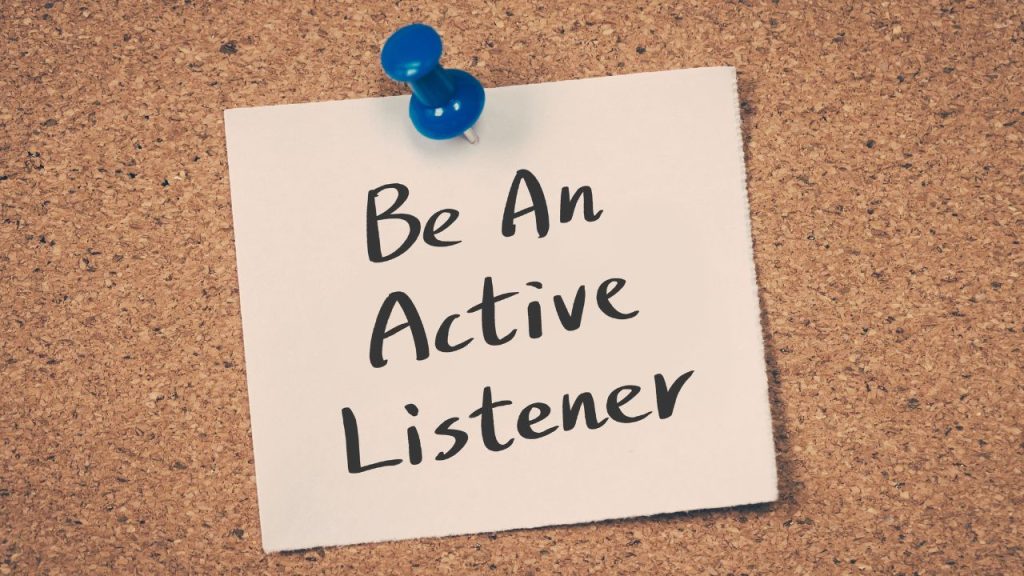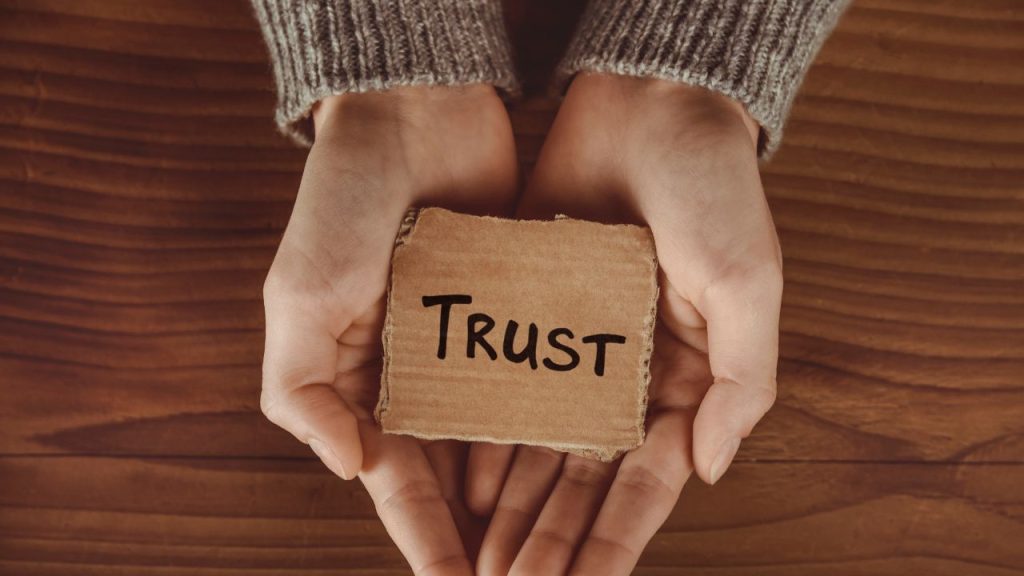Friendship Advice
9 Tips for Resolving Conflict Between Friends
Published
1 year agoon

Friendship is one of the many forms of human existence that offers support, happiness, and experience. However, no relationship is free of challenges. A friend’s disagreement is a common but unpleasant occurrence.
If these disagreements are not resolved, they can lead to the end of relations, but if they are tackled properly, they can result in the development of stronger relations. Peacemaking involves a desire to understand and empathize with the other person and how they view the situation.
Here are 9 concrete and practical ways to manage conflicts and make sure friendships not only endure but flourish even in adversities in this article.
1. Understanding the Root Cause

It has to be said that resolving disagreements is an art and identifying or as I like to say, “dissecting” the conflicts to their culprit is the first step. People lose the plot during an argument because either their expectations didn’t get met, or there was jealousy or other such feelings concealed inside them.
What appears to be a minor annoyance – for instance, missing a few texts or losing track of an arrangement – can frequently disguise something more significant. Try harnessing your emotions and do the same with your friend and chances are that the problem might just solve itself through time.
Communicating as such solves the main problem rather than tackling superficial ones, therefore reducing the chances of recurring conflict. Enlightening yourself with the genesis of the problem adds intelligence and completeness to any disagreement.
2. Finding The Right Time and Place

Timing and place can affect the attempts made towards resolving a conflict. Select a relaxed middle ground in which you and your friend settle comfortably to discuss the issue at hand. Do not start such a discussion in the heat of the moment or in crowded places where it will escalate.
Nice applications are a secluded park bench, a coffee shop, and even at home. If you can take these steps to give everyone time to calm down, rationally talk to them, and limit the chances of further issues. The careful choice of the environment demonstrates that you are serious and care about the relationship.
3. Practicing Active Listening

Active listening is the wallet of communication during any given altercation. In such a manner one could only focus on a friend speaking, their mouth, resisting the temptation of interjecting, and their emotions. Things like eye contact, nods, and sympathetic responses to what they are being told.
Telling them “I suspect that you were saddened when we did not work together,” and everything else accompanied by it is a tone of kindness. Being an active listener is not always agreeing, but it means that the other person has been understood. And this level of respect means that both people could expose their worries and together seek solutions to the problem.
4. Using “I” Statements

The use of “I” statements is an excellent tool for managing relationships and conflicts, especially with those closest to you as it is I statements and not you. For instance instead of saying, “I was offended by your lack of an invitation,” it is better off conveying “You didn’t invite me and I felt bad.”
In turn, such a direction will make the argument less defensive thus bringing out more constructive conflict management. A firm standing in how the argument has personally made one feel is key, but being tactful is essential.
Vulnerability offered by “I” statements is also likely to make a plasma and rather a constructive friend like yourself more willing to explain her point of view. The purpose here is to capture emotions that include neutrality, to ensure that the focus is on finding solutions and not expanding the number of disagreements.
5. Managing Emotions

It is acceptable to feel strong emotions; however, if they interfere with your response to a conflict, they have the potential to do more harm than good. It is not abnormal for a human being with strong emotions, to react out of impulse due to anger, frustration or sadness.
Some ways of preventing this would be to do slow, deep breathing, count to ten and only then say something, or even just walk away for a few seconds. If you manage to contain your temper and remain level-headed, you might find your friend did the same, making the situation more productive.
To keep your mind focused on the task at hand, sometimes the only thing you have to tell yourself is that there is plenty more to this out there than just the situation at hand. Emotions often get in the way of problem solving so the containment of such allows for better conversation.
6. Finding Common Ground

Common ground is one of the first steps in reconciliation, this time between friends. Instead of concentrating on the difference, try to concentrate on something the two of you have in common.
In some instances, some values such as mutual regard or a wish to keep the friendship intact may help one reach an agreement. For instance, you might resolve to have more regular contact or meetings with each other in the future. Even so, compromise is an art and it helps both parties restore trust.
It does so by making both sides feel that they have been listened to. Instead of focusing on the matter of conflict, grapple with the question of why this circumstance, or this specific relationship, is worthwhile.
7. Escalation Triggers

Panic, screaming at one another, and beating down the conversation before it de-escalates may affect how the other person views them and expand the scale of conflict – this may lead to complete conflict escalation.
Leaving the friendship by the door and avoiding other arguments that have occurred before is one of the most important steps in preventing tensions from conflict. Try to keep an eye on your voice, choose polite words and remove all eurythmic box issues from the discussion. If needed, he can postpone the discussion for a few minutes to calm down.
Hate can be unstimulated and easily cured using other approaches – including soft tones or humour which may instead bring a better working atmosphere. The emotions of those around him can be controlled by avoiding pain and tilting his head towards the new source which allows him to turn the fight to another session.
8. Involving a Mediator if Necessary

There are instances when, no matter how hard you try, agreeing with someone isn’t possible without the involvement of an impartial person. As you may know, mediators can be previously agreed on by friends, family, or a counsellor and have been known to be neutral and help with communication.
Choose someone, whom both you and your friends believe and do not feel offended to be overpowering. Mediators can help dispel misconceptions, prevent the topic from straying, and offer reasonable settlements.
The purpose of their presence could also help settle disputes that in turn would enable both parties to be able to speak comfortably. If you thought mediation was too formal, then that is the least of her worries, it has proven helpful in getting back and even cementing bonds between friends.
9. Regaining Trust After the Dispute

When the conflict has come to an end, the focus shifts towards rebuilding the trust, However, this is an uphill task. Engage in activities and take steps that will reinforce your friend’s faith in you as well as your relationship.
This may also involve keeping one’s commitments, communicating frequently, and sending them nice surprises once in a while. Useful inclination and tolerance are fundamental; trust is not an attribute that can be regained in the blink of an eye, but it takes time and effort to nurture it. Ensure that you also perform those tasks which were incorporated in the highlighted discussion.
Rebuilding trust guarantees that the friendship progresses towards stronger and appropriately balanced bases, thereby making the conflict a constructive event geared at achieving greater self-esteem and appreciation for each other.
Conclusion
Disputes among friends are hard but certainly not the end, rather, it would be a chance. Attempting to solve the misunderstanding using care, sensible reasoning and a desire to solve the problem would unify rather than separate you. The strengthening of a friendship succeeds only when both friends are open and regard each other.
Avoiding conflict is what makes relationships weaker, as avoiding conflict should not be the main point, but solving it should. Building up the number of positive relationships is a far more developing concept of conflict management because only those individuals who are aware of the surprise factor can apply it and become the ultimate victor. Lasting friendship can arise from even the hardest conflicts if worked on correctly.
You may like
-


10 Thoughtful and Unique Wedding Gifts for Friends
-


How to Build a Strong Foundation for Lifelong Friendships
-


7 Stunning Tips for Giving Advice to Your Friends
-


5 Tips for Listening to a Friend in Need
-


How to Make a Long-Distance Friendship Last Forever
-


10 Amazing Benefits of Intergenerational Friendships
Friendship Advice
10 Last Minute Farewell Gifts for Friends
Published
1 year agoon
December 3, 2024
As any of us who has been through this heart-wrenching experience will tell you it is not easy to say goodbye to one’s close friends. Bitter goodbyes can always be made easier if thoughtful farewell gifts for friends are given as tokens of love and friendship. Indeed, leaving something for the last minute may not be the best way to prepare, but there is never a shortage of ideas which are both practical and full of emotional value.
From a variety of products to numerous do-it-yourself ideas, there is something for your pals and situations. This guide discusses ten simple, cheap and nonetheless emotionally relevant farewell gifts for friends that would not call for much foresight but are quite memorable.
Memorable Farewell Gifts For Friends
Handwritten Letters or Cards

The most heartfelt gift that can be given to a friend apart from time is a personal letter. Nothing is more attractive than the written word. In your own words, recollect shared reminiscences, pecks, or defining moments of your friendship. Likewise, incorporate how your friend has altered your outlook to some extent as well as what you expect from their future in a more relaxed tone.
Written words are considered the most uncomplicated, yet valuable adornment because these words possess the potential of shaping the destiny of mankind, and when my friend looks back in time, it will be an invaluable blessing for him or her. Showing love and compassion is always better than any kind of money. Staying rich won’t help when there comes a day of separation.
Instant Photo Albums
A compact digital photo album is an innovative and value-oriented gift for any friend. Photographs are the best source of memories and now you can gift them in an album. It isn’t difficult anymore due to the growth of technology in today’s resolving environment. Other than the plain photographs, add those that mark passages of progression, and even “natural” pictures of you both.
Pictures speak a thousand words, so write short ones & interesting descriptions to give them character. It should become a striking reminder of the time spent and the bond developed over the years when the other person will capture the whole visually appealing narrative in their eyes either when looking at it afterwards or while showing it to someone else.
DIY Care Packages
DIY care packages are a great way to extend love and thoughtfulness through a well-thought-out combination of some small but thoughtful items. Modify the package to suit your friend’s taste by adding food, travel-related items, self-care products or anything that fits their character.
Putting it all together in a nicely decorated box helps, and the final touch is a note written by hand. Out of other friendly gift items, one can come across, a daycare package is convenient and quite personal. This is quite ingenious of letting your friend know how best you can care for them and how much you love them as you prepare them for their new adventure.
Subscription Services
People now enjoy gifting subscriptions rather than giving physical gifts. Subscription services are also a great option to consider when buying a farewell gift for a friend. If they enjoy cooking, watching their favourite show or listening to books, buy them a subscription to a meal kit, a streaming service, or even an audiobook.
Such subscriptions add value to the user and always remind them of the person who gifted them that subscription. This makes the gifting experience much more exciting. A gift like this is great for your friend because it will last long enough to help them enjoy themselves without the need to replace it.
A Plant with a Note

With every plant comes a note that, grows with me, in the case where a friend is leaving for a new place or switching jobs. Give them a potted plant as it signifies the longevity of the friendship and how supportive the bond is. Buy a hardy herb or succulent as they are much easier to take care of.
You can also include a meaningful message that is more metaphorical or even explains half the bond you share There is no denying that plants are beautiful gifts for everyone and are ideal for any occasion be it farewell or welcoming someone back home as they allow for a perfect memento of memories and great times.
Books with a Personal Message

Books are gifts that will always bring happiness and spark motivation which is why they make great parting presents to one’s friends. Choose a title which most relates to him or her IE a nice thriller, a comic book or an inspirational book.
To increase its meaning, inscribe a note about the book’s impression of you and your friendship on the inside cover, indicating the reason you bought that book. Such a subtle detail turns a dry book into a memento and establishes an eternal bond through the pages. Every time they pick it up, they will remember you and the memories you two have shared.
A Novelty Gift Card
In the beginning, gift cards would appear quite boring and lack the personality but in light of the right artwork, they can be quite stylish and unique. An easy way to go about this is ensuring that the card chosen is something that they will use, such as for their preferred coffee shop or a gifting book store.
To enhance the experience a little further, consider including a small gift such as a mug when gifting a coffee shop card, or a nice fancy bookmark for a bookstore voucher. A good card is one of the best parting gifts to friends because it not only gives them the freedom to choose what they want but it carries the heartfelt memories behind them gifting you the card in the first place.
Gift a Playlist
Sharing a playlist with someone can be a perfect gift if the recipient is a music enthusiast as there are a lot of memories and emotions attached to it – in the same way that music can evoke different emotions. Compose songs that have been jotted down from the fond memories shared in addition to a couple of forgotten jokes, some inside jokes, or theme songs from your favourite hangouts.
You could upload it on a digital platform or put it on a compact disk with the songs handwritten on a list. This gift is perfect for creating a nostalgic feeling of the good times you had with your friend.
Small Tokens with Big Meaning
The relationships that we have are often sparked or set on fire through the smallest of gestures. Whether it be a friendship bracelet, a small pocket charm or even a small note jar, such items seem quite simple but evoke powerful emotions without the need for a grand gesture.
Such simple tokens are not stressful to get or make but are very meaningful at the same time. When it comes to farewell gifts for friends, such souvenirs have earned their place due to their perfect perplexity and quiet significance. It’ll be a reminder of the moments you have shared every time your friend sees or uses the token.
Conclusion
It is good to ensure that farewell gifts for friends are never simple things but items that speak of love, appreciation and treasured moments passed. Special items such as hand-written letters, a customized piece, and an assembled collection of songs have shown that it is the thought that counts.
And even in cases where there is no time left, every miser has a dozen ideas to make his gift appropriate and impressive. Saying goodbye to your friend does not mean the end of your relationship and pleasing that gift, which separates you pardon the expression, will suffice.
Friendship Advice
10 Best Engagement Gifts for a Friend in 2024
Published
1 year agoon
December 2, 2024
Receiving an engagement gift from friends is a way to show appreciation for such an important occasion in their lives. Engagement gifts are not offered simply as gifts but are intended to express appreciation for the new phase in his or her life and the journey that is to come.
As time goes by, the age of buying gifts as mere items is gone and now what remains are gifts that are relevant, useful or even have a personal touch to tell the couple’s story. Whether it is something that they will keep for years or something that they will enjoy, rest assured there will be a gift for every type of couple.
Check the best 10 engagement gifts for a friend from our list and express your love for them the best way you can.
Top Engagement Gift for Friend
1. Personalised Jewelry
Let’s start with jewellery, which is the best gift for a couple! You can gift a jewellery set to the bride and cufflinks or a gold chain to the groom. You can also get it custom-made so that it will always remain in fashion. You can consider gifting a bracelet, a necklace, or a ring. The other party can always engrave a special date, name, or message on it making the gift more special.
2. Luxury Customized Candles
It’s much better to grab a candle as it’s associated with the scent of romance and a combination of both. This takes us to customizable candles which bear interesting scents or fragrances such as lavender for a cute scent or rose for a romantic touch. Do not forget, to remove the manufacturer’s label from your product, if you include that option.
3. Personalized Scrapbooks
Recording memories is something every couple wants to do. A beautifully designed photo album would meet this requirement nicely. We have the leather and the eco-friendly material. The text within the album has an indentation for comments to provide the reader with a plot and context.
4. High-End Kitchen Appliances
Currently, occupied couples have a lot of available options at hand in the form of coffee makers, multi-purpose air fryers and other sophisticated kitchen appliances. In this segment, the notable evolution in brand popularity is Breville and Ninja in 2024. Such gifts enhance the quality of life so they are always wise.
5. Couples’ Spa Vouchers

A spa appointment ensures that you are pampered before a romantic outing. Ideally, a spa would simulate such scores, and even provide a hydrotherapy room. There are also some of the more high-end spas where I have spent fondly some couple offers.
6. Engraved Champagne Flutes
One of the most relied upon custom-made champagne flutes would be a fitting engraving of one’s name coupled with their partner’s or their respective engagement dates. Guess I will also look for a flute with crystal or gold so that when that day comes, they can pop the champagne in style!
7. Smart Home Gadgets
Technology married couples have greatly embraced definitely offers extra comfort and eases the couple’s life courtesy of starting with virtual assistants including other creative devices like sophisticated smart thermostats with Nest and Alex in the R & D trying to perfect the same.
8. Handcrafted Home Decor
A Home decor item such as those crafted by a local Artisan through an Artisan centre is unique in its own way and has a certain i.e. bland cosiness for the most part. Consider niche products such as hand-woven rugs, hand-thrown crockery, and for that matter even a decorative piece, not forgetting that buying such a gift would allow you to support the local and overseas craftspersons from a distance.
9. Couple’s Subscription Boxes
Inter engagements might get tedious over some time but in this case, engagement and marriage wouldn’t be dull as well because of the much-anticipated subscription boxes that are packed with gourmet food items and many other things only to be set aside by overdue wine tours, travel essentials and a horde of books or book reading clubs as the case might be.
10. Adventure Getaway Package
For exploring lovers an adventurous journey is different and it will be cherished for instance if it would be hiking in the hills or a salvage dive while being stranded in forests moments in those areas are engraved to reinforce their relationship.
Conclusion
An engagement gift for a friend should reflect your thoughtfulness and their unique tastes. The most meaningful gifts will be useful or have great sentimental value while reminding that special couple of their fairytale together.
Be it a memorable memento, an experience they will never forget or an elegant piece of decor for their house, any ideal gift would surely bring charm to their engagement. With these 10 curated ideas, you can find an engagement gift for a friend that expresses your excitement for their journey while leaving a lasting impression they’ll cherish forever.
Friendship Advice
10 Thoughtful and Unique Wedding Gifts for Friends
Published
1 year agoon
December 1, 2024
Selecting the perfect wedding gift for a friend is an opportunity to celebrate their union in a meaningful way. While traditional gifts like toasters and blenders are common, choosing a wedding gift for a friend that is unique and thoughtful can leave a lasting impression.
Items, experiences, and crafts which would represent the wedding couple would display the level of friendship and consideration for each other. A carefully selected gift is a perfect tribute to their love story while serving as an invaluable heirloom further forging milestones that would remain unforgettable throughout one’s life.
1. Custom Artwork
A tailor-made painting can rank among the most exquisite and artistic wedding gifts. Having a portrait of the couple or what they hold dear crafted into artwork is without a doubt a great gift. An engagement portrait or an abstract piece that shows their connections are some good ideas to have in mind.
The beauty of this gift is that should it be executed perfectly, it will become a beautiful thing that they would want to see every single day. Custom illustrations can range from elegant watercolours to whimsical hand-drawn sketches which allow you to choose a portrait style that fits the couple.
2. Engraved Kitchenware
For people who love cooking or have an interest in the kitchen, engraved kitchenware is the best gift as it is functional and deeply personal to them. Cutting boards, wooden spoons, and serving trays all have a beautiful home in the kitchen and they are easily ‘engrave-able’ too.
The initials, names and the date of the couple’s marriage can always be in sight when the couple prepares food, allowing them to never forget their wedding day. Even simply cooking would feel romantic with a set of engraved utensils as a mere date or a couple’s love message can be inscribed on it.
3. Subscription Boxes
Subscription boxes are another interesting option, as they cover the couple’s interests but also allow for a continuous engagement plan so that they can receive gifts on a monthly or quarterly basis. It could be gourmet food, some books or home decorations, these services have everything and everything gets delivered right to your doorstep.
This way the couple is also reminded of their loved ones throughout the year which is also a great feeling. The best part about these boxes is finding a suitable one that goes hand in hand with the culture of the couple getting married.
4. Luxury Bedding Sets
High-end goods such as these will surely amplify the overall aesthetic factor and create a lavish appeal for a newlywed couple’s bedroom. The feel of cotton linen or silk sheets, and wand arm spherical colour patterns are the factors that make a bedroom look elegant.
On the other hand, even the colour of the sheets that the couple normally goes for is very important, be it neutral sheets or even bright ones. Investing in these resources will surely create an impact well after the couple gets married.
5. Personalized Wine or Whiskey Glasses
Personalized wine or whiskey glasses can be a wonderful, practical gift that never misses its mark. A couple will appreciate a custom engraving be it their names, a special date or a short saying. There is a wide variety of engraving styles too.
On this note, crystal tumblers or wine glasses would serve the couple well as the quality makes a difference in drinking. Home barware is beautifully customized to suit even the sophisticated interiors but what reigns supreme is its emotional value when the couple sips from it together.
6. Memory Book or Scrapbook
Every person has books full of their memories and pictures. A bride and groom typically do too, but when properly crafted into a scrapbook these stand out. If you are one of the relatives or friends who has seen the couple grow together for all this time, you would want to assist them in this project.
Furthermore, couples have a wide selection of pictures to mix with the book, such as pictures from their first date, engagement and their wedding day. Leave space for the couple to add their thoughts, making it a living document of their relationship. The scrapbook is a creative portrayal of their love that would be passed down through generations.
7. Adventurous Activities for the Couple
Instead of a tangible item, members of the family can assist the couple with planning the adventure and deserting the idea of having an experience together. Ranging from learning to make new foods to going on hiking trips or even an escape for the weekend, these opportunities are pretty much non-existent.
Going on adventure experiences helps couples relish new activities together thus strengthening their bond. Depending on the individual couple, go for things that interest them, for example, a wine tasting for the couple who loves to spend their dollars over luxuries or sky diving for the perfect popcorn. There is nothing more entertaining than giving an experienced gift as it allows you to have a cool, exciting and unforgettable trip rather than sticking to the old boxes.
8. Home Accent Decors
A set of sculptures, vases, candle stands or accent trays can also be included when giving out a gift as it allows you to purchase beautiful functional home pieces. Such ornamental pieces can be useful to assist in transforming the living area into a more sophisticated home for the couple.
Otherwise, when deciding over the home decorations with the couple in mind keep their traits in consideration whether they are sleekly minimalist, quirky vintage or maybe even clean modern. Such items are a great way and a few more items can also be included to subtly compliment their house and mark the beginning of their new life with enduring and impactful artifacts.
9. Custom Jewelry
Custom jewellery has become the ultimate gift that many appreciate because it is unique and custom-made. For instance, in one of the heartwarming moments that can be appreciated for a lifetime, think of gifting silver necklaces, bracelets or rings with deep meaning like an engraved word.
Such a gift will also be a priceless reminder of the time and love that accompanied such a gift. Custom jewellery that can be defined as elegant or simple to the more elaborate types that are attention-grabbing and make bold statements are sure to have something that meets their taste Custom Jewelry.
10. Eco-Friendly Gifts
In light of the current environmental issues faced globally, eco-friendly gifts will sound more appealing to all couples who care about the environment. Eco-friendly gifts are stunningly beautiful and very sophisticated. In this case, consider gifts that are focused on eco-friendliness such as organic cotton towels, bamboo kitchenware, or stainless steel and glass drinking bottles in place of plastic and paper ones.
Such gifts do more than just cut down on waste generated, it helps boost eco-friendly practices. Furthermore, such types of gifts are usually classic so that they will always have their worth and usefulness even after a long period. Giving a sustainable gift is one of the best ways to show how much you appreciate the couple and the world.
Conclusion
When selecting the perfect wedding gift for a friend, the key is to choose something that reflects the couple’s personality and your connection with them. For instance, personalized gifts such as the wedding date or location and other details serve as wonderful options for those who wish to stand out.
A wedding gift for a friend that is thoughtful and original can leave a lasting impression, ensuring that your gesture remains memorable for years. For many couples, these gifts hold a deep and emotional aspect as they believe it takes time to find and gift such items.
Latest
-

 Quotes and Captions1 year ago
Quotes and Captions1 year ago70+ Fake People Quotes in English
-

 Entertainment1 year ago
Entertainment1 year agoUpcoming Projects of Kate Beckinsale in 2024 and 2025
-

 Quotes and Captions1 year ago
Quotes and Captions1 year ago100+ Powerful Silence Quotes in English
-

 Friendship Advice1 year ago
Friendship Advice1 year ago9 Benefits of Social Media in Modern Friendships
-

 Entertainment1 year ago
Entertainment1 year agoTop 10 Gaming Creators on YouTube in India
-

 Entertainment1 year ago
Entertainment1 year agoList of Top 10 Most Subscribed Youtube Channels This Year
-

 Quotes and Captions1 year ago
Quotes and Captions1 year ago100+ Heart Touching Emotional Brother And Sister Quotes
-

 Entertainment1 year ago
Entertainment1 year agoWhat’s The Hype Around Samay Raina’s Show ‘India’s Got Latent’
